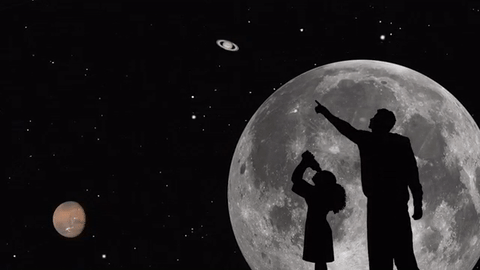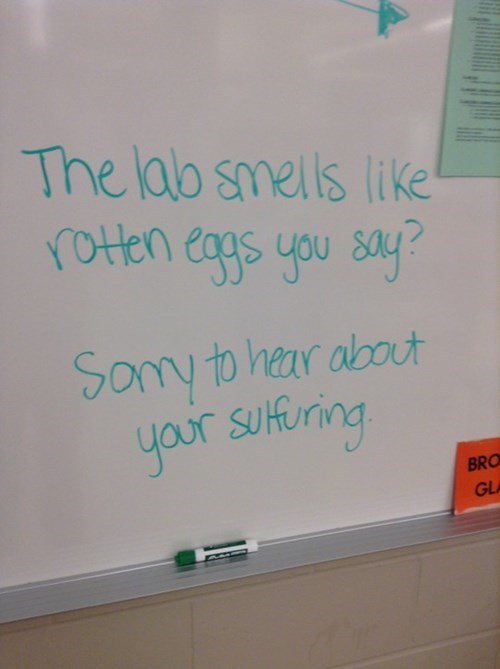What’s Up For February?
What’s Up for February?
What’s Up for February? Look to the night sky for a brighter Venus, Comet 45P, asteroid Vesta and more.

Tonight, you can see Venus along with a crescent moon, Mars and Uranus just after sunset. No binoculars needed!

While there are no meteor showers this month, behold the zodiacal light!

This phenomenon is caused when sunlight reflects off dust particles in the plane of our solar system. Use Venus and Mars as a cone-shaped guide on the western horizon in late February and March.

Comet 45P will be visible using binoculars and telescope and will make its closest approach to Earth on February 11.

Finally, bright asteroid Vesta can be found in the constellation Pisces.
Follow us on Tumblr for your regular dose of space: http://nasa.tumblr.com
More Posts from Drunkscience4u and Others

Hold your nose at this science pun.
Happy International Women’s Day!

Today we celebrate International Women’s Day, a day in which we honor and recognize the contributions of women…both on Earth and in space.

Since the beginning, women have been essential to the progression and success of America’s space program.

Throughout history, women have had to overcome struggles in the workplace. The victories for gender rights were not achieved easily or quickly, and our work is not done.

Today, we strive to make sure that our legacy of inclusion and excellence lives on.

We have a long-standing cultural commitment to excellence that is largely driven by data, including data about our people. And our data shows progress is driven by questioning our assumptions and cultural prejudices – by embracing and nurturing all talent we have available, regardless of gender, race or other protected status, to build a workforce as diverse as our mission. This is how we, as a nation, will take the next giant leap in exploration.

As a world leader in science, aeronautics, space exploration and technology, we have a diverse mission that demands talent from every corner of America, and every walk of life.

So, join us today, and every day, as we continue our legacy of inclusion and excellence.

Happy International Women’s Day!
Learn more about the inspiring woman at NASA here: https://women.nasa.gov/

In spite of a decade of intense research, we still don’t have a commercially available vaccine for malaria.
While a candidate vaccine is being piloted next year, scientists have found a potentially more promising target in the bridge malaria makes with our red blood cells, which could lead to a more effective, cheaply made vaccine.
Continue Reading.

Drunk Science is HERE!!! Our first episode explains the mystery of slime. It also makes drunken attempts at humor and references super heroes. It's literally everything you could ever need. Click link in bio to watch! #drunkscience #stem #blerd #funny #science #drunk #labcoat #youtube #experiment http://ift.tt/2mQUVL1

Hey guys, we made a flyer that you can print out and post in your places of choice! http://ift.tt/2jNXMm3

um guys?
canada is currently considering banning imidacloprid, which is apparently “one of the most widely used bee-killing pesticides in the world”. this seems pretty huge, so if you’ve got two seconds, add your name to the list! as of posting this link, they need just over 8,000 more signatures by february 21!

Primitive plants are the latest forms of Earth life to show they can survive in the harshness of space, and for many months. Cold-loving algae from the Arctic Circle have joined the space-travelling club, alongside bacteria, lichens and even simple animals called tardigrades.
Preliminary studies of the algae after their return to Earth from the International Space Station lend some weight to the “panspermia” theory, that comets and meteorites could potentially deliver life to otherwise sterile planets. The results also provide insights into the potential for human colonies on distant planets to grow crops brought from Earth.
The algae were of the Sphaerocystis species, codenamed CCCryo 101-99, and were returned to Earth in June last year after spending 530 days on a panel outside the ISS. While space-borne, they withstood the vacuum, temperatures ranging from -20 °C at night to 47.2 °C during the day, plus perpetual ultraviolet radiation of a strength that would destroy most life on Earth if not filtered out by the atmosphere.
“I’m sure that plants of many kinds have been on the ISS before, but on the inside, not the outside,” says Thomas Leya of the Fraunhofer Institute for Cell Therapy and Immunology in Potsdam, Germany, who organised the algae experiment. “As far as I know, this is the first report of plants exposed on the surface of the space station.”
Continue Reading.
-
 humongousperfectionwolf-blog liked this · 5 years ago
humongousperfectionwolf-blog liked this · 5 years ago -
 almostoriginalartisan liked this · 7 years ago
almostoriginalartisan liked this · 7 years ago -
 sowenaim reblogged this · 7 years ago
sowenaim reblogged this · 7 years ago -
 basedgalaxymag-blog reblogged this · 7 years ago
basedgalaxymag-blog reblogged this · 7 years ago -
 somnurret-blog liked this · 8 years ago
somnurret-blog liked this · 8 years ago -
 belkijanbelkimegi-blog liked this · 8 years ago
belkijanbelkimegi-blog liked this · 8 years ago -
 voguequeen21 liked this · 8 years ago
voguequeen21 liked this · 8 years ago -
 brokentowels liked this · 8 years ago
brokentowels liked this · 8 years ago -
 noble-kale liked this · 8 years ago
noble-kale liked this · 8 years ago -
 blueroses10436 liked this · 8 years ago
blueroses10436 liked this · 8 years ago -
 dwemerbabe reblogged this · 8 years ago
dwemerbabe reblogged this · 8 years ago -
 delicatedestinydonut liked this · 8 years ago
delicatedestinydonut liked this · 8 years ago -
 bunnymonk liked this · 8 years ago
bunnymonk liked this · 8 years ago -
 life-on-a-blue-dot reblogged this · 8 years ago
life-on-a-blue-dot reblogged this · 8 years ago -
 knightofcup liked this · 8 years ago
knightofcup liked this · 8 years ago -
 honey-daisies liked this · 8 years ago
honey-daisies liked this · 8 years ago -
 marrowtooths-trashbin liked this · 8 years ago
marrowtooths-trashbin liked this · 8 years ago -
 lazyroughdrafts reblogged this · 8 years ago
lazyroughdrafts reblogged this · 8 years ago -
 lazyroughdrafts liked this · 8 years ago
lazyroughdrafts liked this · 8 years ago -
 drrrling liked this · 8 years ago
drrrling liked this · 8 years ago -
 patriciakay25840-blog liked this · 8 years ago
patriciakay25840-blog liked this · 8 years ago -
 thejollywriter reblogged this · 8 years ago
thejollywriter reblogged this · 8 years ago -
 thejollywriter reblogged this · 8 years ago
thejollywriter reblogged this · 8 years ago -
 thedeadpoets-opera liked this · 8 years ago
thedeadpoets-opera liked this · 8 years ago -
 absolutesciencefiction reblogged this · 8 years ago
absolutesciencefiction reblogged this · 8 years ago
The official page of Drunk Science! An enthusiastic host performs simple experiments and then humorously explains the science behind the result, all while visibly drunk.
126 posts





